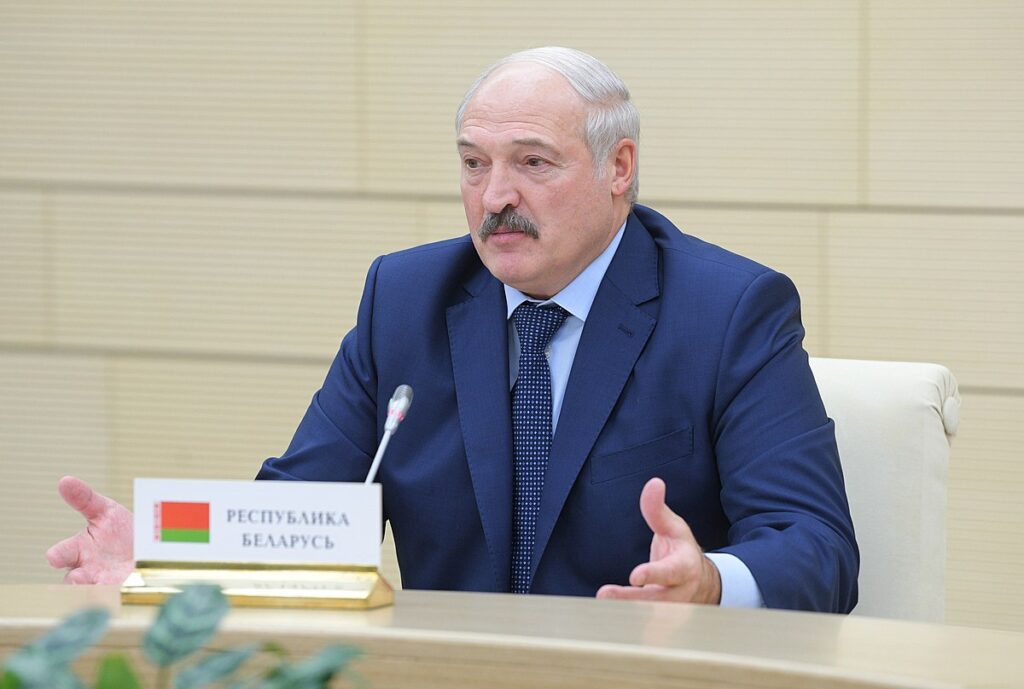
The Belarusian government has drafted a new military doctrine that, for the first time, accounts for the usage of nuclear weapons. The new doctrine will reflect the rapid change in Belarusian strategic thinking in recent years that has seen Minsk push ally Moscow for the deployment of those weapons on soil.
Belarus last updated its military doctrine in 2016, with an eye on the risk of “hybrid war” and citing examples of Syria and Ukraine. In the time since, relations between Minsk and the West, while never warm, declined precipitously, beginning first with Belarus’ crackdown on domestic protests in 2020 and later with the Russian invasion of Ukraine. Simultaneously, U.S.-Russian arms control agreements have been unwound, raising the specter of nuclear war.
On February 27, 2022, three days after Russia began its military operation in Ukraine, Belarusians went to the polls to vote in a new constitution that would approve the stationing of nuclear weapons on Belarusian territory. President Alexander Lukashenko, whose authoritarian government’s control ensured the vote would pass, was quoted as saying at a polling station, “If you transfer nuclear weapons to Poland or Lithuania, to our borders, then I will turn to Putin to return the nuclear weapons that I gave away without any conditions.”
By mid-2023, Russia began delivering nuclear warheads to Belarus, reversing the decision made in the 1990s to remove nuclear weapons from the country.
At independence, Belarus inherited a small nuclear arsenal from the Soviet Union, consisting of several dozen RT-2PM Topol intercontinental ballistic missiles, carrying a range of 12,500 kilometers, as well as tactical nuclear weapons of an unknown type. Though Minsk eventually followed through with returning them to Russia, a report in The New York Times published on October 12, 1996 highlighted Washington’s concern that President Lukashenko – then in his first term – would derail the process and seek to retain some of the weapons.
Three decades later, nuclear weapons have returned to Belarus, which pushed for the deployment of the weapons against the backdrop of a rapidly declining security environment in eastern Europe. At a U.N. meeting in October 2023, Belarus’ U.N. Ambassador Vasiliy Pavlov defended the deployment of the weapons, citing “escalating military-political tensions in the region” as forcing Minsk to strengthen its defense capabilities.
Pavlov furthermore highlighted NATO’s nuclear-sharing policy as justification for Russian-Belarusian defense cooperation, echoing Lukashenko’s barbs targeting western neighbor Poland, which also seeks to host nuclear weapons. Relations with Warsaw are at a nadir. Lukashenko has encouraged mass migrant flows towards the Polish border, aiming to stoke instability in Poland and the European Union more broadly. He has also insinuated that the Russian paramilitary group Wagner could send agents into Poland to make mischief, as well. In August, Poland rushed additional troops to its border with Belarus after a standoff over alleged airspace violations.
Belarus’ nuclear deterrent will not be fully-independent, needing Russian permission to launch and thus falling under Moscow’s usage doctrine, but nevertheless the Belarusian doctrine should clarify the conditions in which Minsk sees a security threat rising to the level of nuclear weapons usage. In aninterview with BelTA this week, Defense Minister Viktor Khrenin noted, “As part of the response to possible threats to the military security of our country, we have clearly defined and communicated the views of Belarus on the use of tactical nuclear weapons stationed on our territory.”
President Lukashenko has given numerous interviews to Belarusian and Russian state media since last year outlining his views on the weapons in his characteristically-bombastic style, providing some direction for the eventual doctrine. In a statement in March 2023, President Lukashenko accused Warsaw of harboring invasion plans against his country, pledging that Belarus would use all available means to defend itself, including nuclear weapons, should that happen.
Lukashenko separately told BelTA, “Yes, nuclear weapons represent a strong deterring factor. But these are tactical nuclear weapons, not strategic ones. This is why we will use them immediately once aggression is launched against us.”
As Lukashenko himself confirmed, the Russian-supplied warheads are for use with tactical, not strategic, weapons, limiting their range to close to Belarus’ borders. (Unlike the Topols.) In the event of a decision, Belarus would deliver strikes using the 9K720 Iskander short-range ballistic missile complexes, delivered from Russia starting in 2022, that are capable of firing missiles armed with both conventional and nuclear warheads out to ranges of at least 500 kilometers.
Russian President Vladimir Putin has moreover suggested that the Belarusian Air Force’s Su-25s could be modified to act as carriers, as well.
The addition of references to nuclear weapons will likely be the most significant change in the new Belarusian military doctrine, but Defense Minister Khrenin highlighted that the document will also take into account the 2022 unrest in Kazakhstan, which he referred to as a “coup attempt.” That crisis, born of protests that spiraled into violence in early January 2022, led to the deployment of several thousand CSTO troops to secure Kazakh military facilities, while the country’s security forces deployed to its major cities to quell the turbulence.
In the Kazakh situation, Belarusian officials saw parallels with the protests that gripped Belarus several years prior, after an election marred by fraud allegations. Popular anger over the vote-rigging – as well as general discontent with the government – prompted Belarusians to take to the streets to call for the resignation of Lukashenko, who, brandishing a rifle, chose a security crackdown instead.
Moscow still retains control of the nuclear weapons, but having them on his soil has put some swagger in Lukashenko’s step. Belarusian President Alexander Lukashenko boasted to Russian state media in an interview last June, “No one has so far fought against a nuclear country, a country that has nuclear weapons.” He said in another interview, “It’s very simple. Join the Union State of Belarus and Russia. That’s all: there will be nuclear weapons for everyone.”
Military markets analyst, covering Eurasia, Middle East, and Africa.




